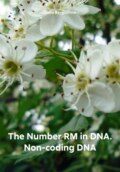
Zakia Bayguzhina
Unknown Green Energy
Now it becomes clear why the molecule is so uniformly twisted along its entire axis. Equal electrostatic forces act between complementary pairs of nitrogenous bases in DNA.
But where is that unknown source of energy hidden? If it is found, then DNA performs not only the familiar function of storing hereditary information, but also one more.
How does the molecule provide the cell with energy? First, let us recall what DNA methylation is. It consists in the addition of (—CH₃) to the cytosine from the acceptor of the methyl group and is catalyzed by the enzyme. In this case, the DNA is twisted more strongly as a result of an increase in the electrostatic repulsive forces. Methylated cytosine in subsequent reactions is oxidized by other enzymes and passes back into cytosine:
Cytosine → 5-methylcytosine → 5-hydroxymethylcytosine → 5-formylcytosine → 5-carboxycytosine → Cytosine
An important merit in the study of the stages of demethylation belongs to a group of researchers led by Professor Yi Zhang. They discovered intermediate nitrogenous bases of demethylation.
At the initial stages, the DNA is evenly twisted along its entire length or only a part of it. This is due to an increase in the number of electrons, which leads to stronger twisting and stress in chemical bonds. During the transition to “pure” cytosine, the DNA is unwound along its entire length or again only a part of it, depending on what is demethylated. That’s when that unknown energy is formed, which is necessary for further biochemical processes and such a complex one as DNA replication.
The molecule is compactly stacked in the chromosome. Maybe the unwinding of the entire DNA of the chromosome gives a signal to the beginning of replication, and if the regions of the location of genes are affected, then to the synthesis of mRNA?
Perhaps cytosine methylation is an activator of the processes.
Thus, it can be assumed that DNA performs another important function – providing the cell with additional energy in the form of heat generated when the molecule is unwound.
By right, DNA is called the main molecule of a living cell.
The genes in the DNA make up a small part. The rest is sometimes called the “junk DNA” or “non-functional.”
There are many assumptions and disputes about this part of the molecule, but we are interested in the very existence of these hitherto incomprehensible areas.
When demethylating DNA along its entire length, it is this part of it that plays the leading role, since when unwinding, the heat necessary for conducting biochemical reactions is formed. The longer the molecule, the more heat is generated.





